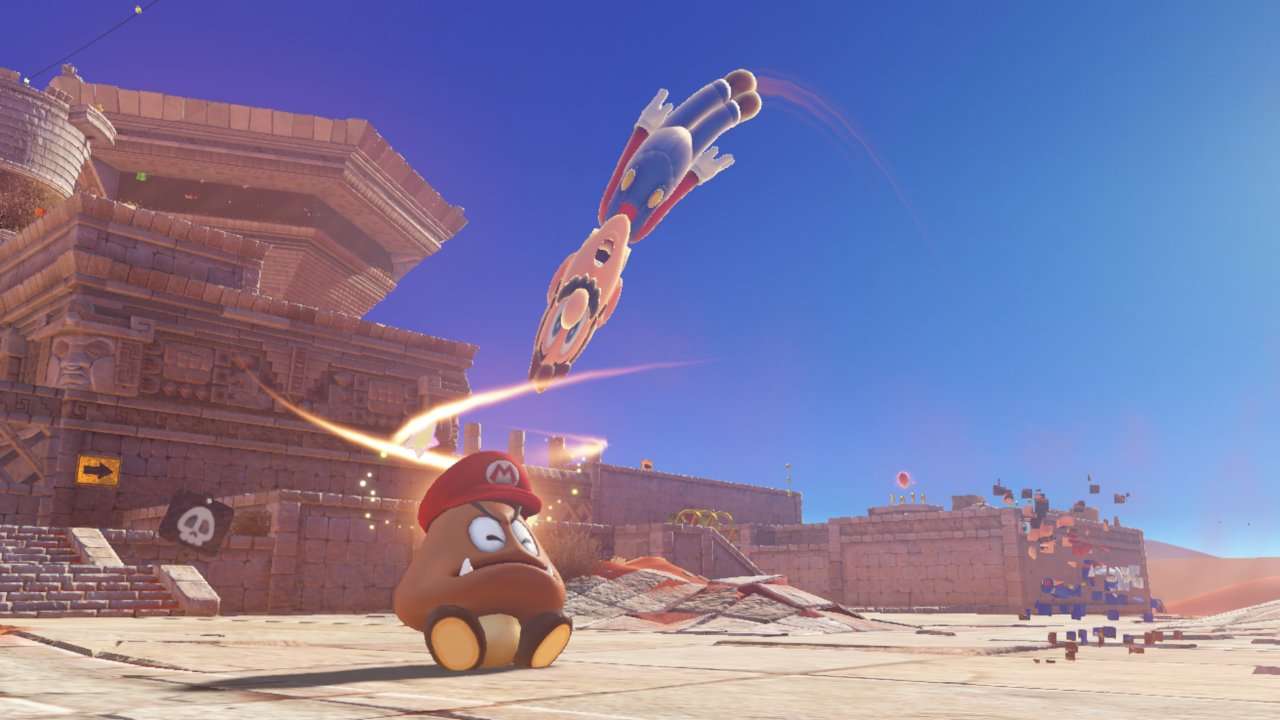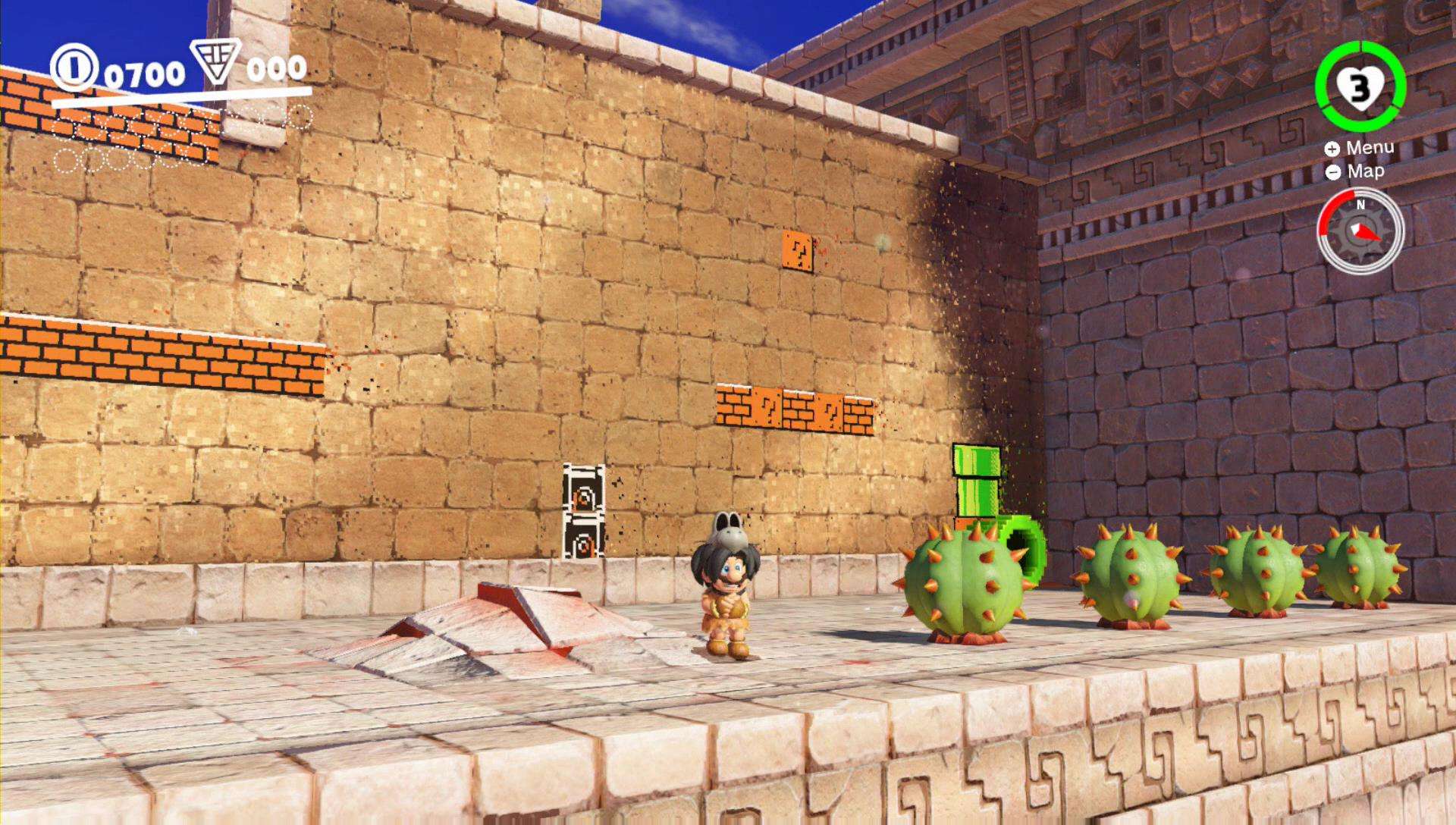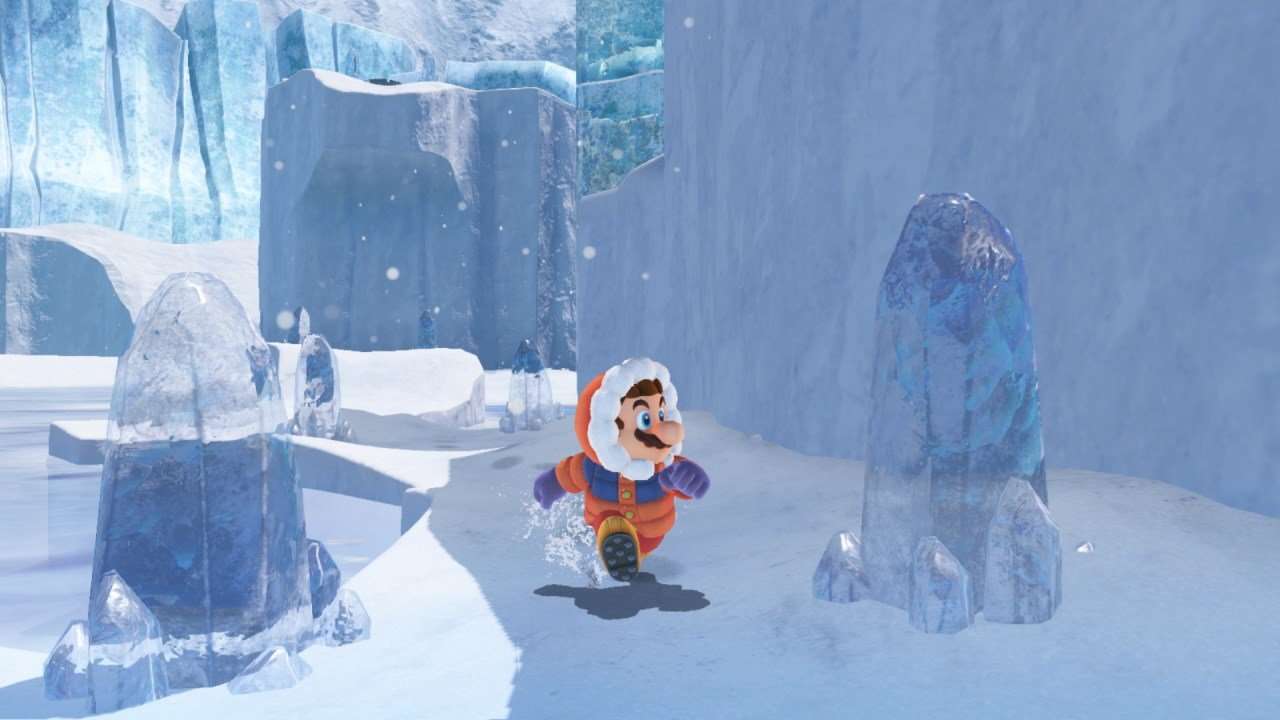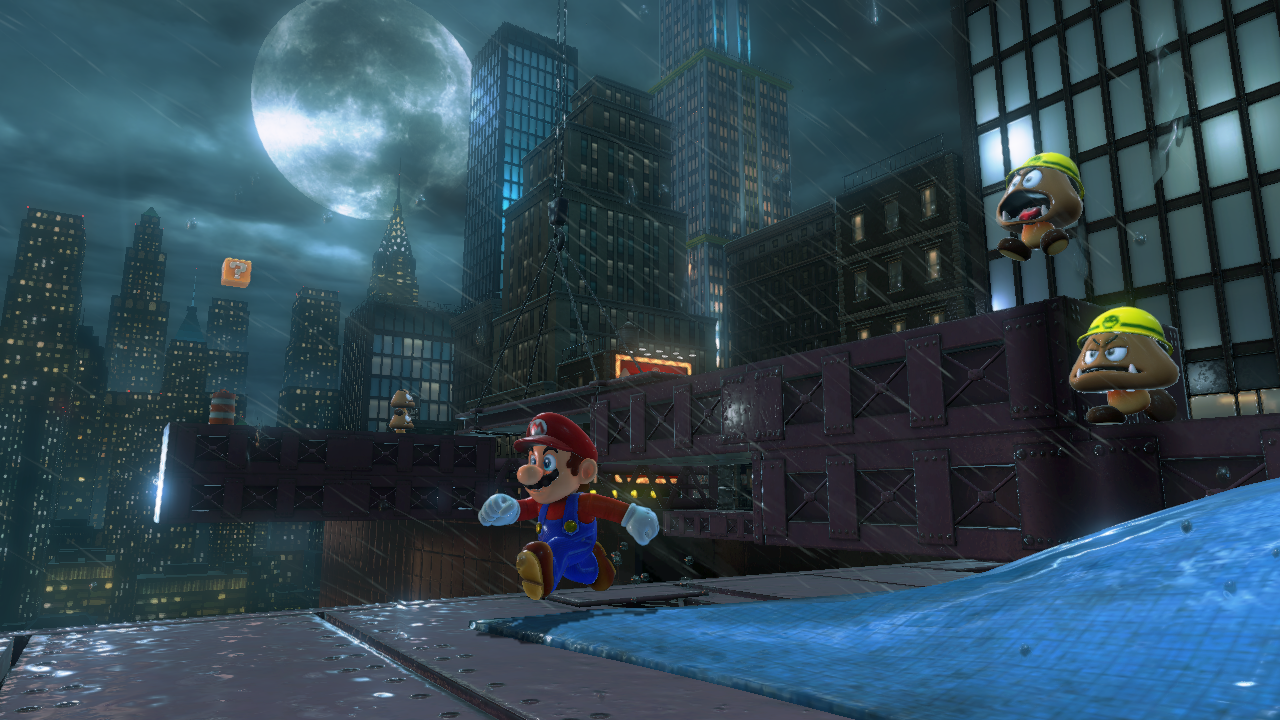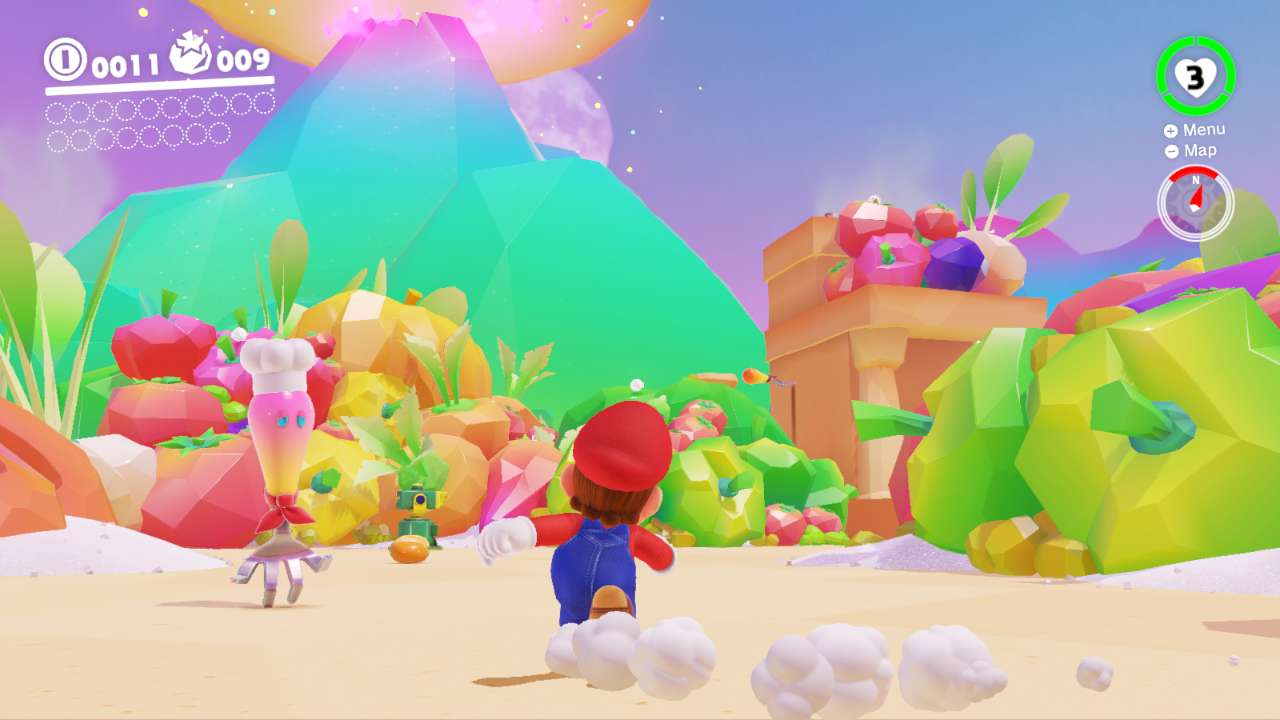
Super Mario Odyssey Switch Review
The release of the Switch has brought a Nintendo who is confident and actively out to prove why they are some of the best in the business. It is exciting to see Nintendo in this state, and that attitude is gushing into their current releases for the successful hybrid console. The Legend of Zelda: Breath of the Wild was a huge shift for that franchise, and while Super Mario Odyssey isn’t as a big of a change for the red (now ex) plumber, there are new ideas here that show Nintendo can still make amazing Mario titles that feel fresh and reinvigorating. It’s not like the previous title, Super Mario 3D World, was bad, it was a great platformer, but it felt safe and more focused on bringing a working multiplayer to the world of Mario. Super Mario Odyssey, on the other hand, continues where Nintendo left off with Super Mario Sunshine, returning to the sandbox platform gameplay that elevates it with a big focus on surprise and discovery over linearity.
One area where Super Mario Odyssey doesn’t surprise is the story. It’s the same as most other mainline Mario games, but with a bit of added flair. Bowser has once again taken Princess Peach from her castle, but this time Bowser is going all in; he has set up a wedding ceremony to make Peach his wife. To make it one of the best weddings ever, Bowser is visiting each Kingdom and stealing their prize possessions to use for his special occasion. Mario isn’t invited, but sets out to put a stop to this with the help of Cappy, a strange ghostly hat, who has had his partner, Tiara, stolen along with Peach. Cappy has a fantastic ability that enables his wearer to fuse into enemies, a very handy mechanic that the game fully utilises, but more importantly, is a better addition than F.L.U.D.D. was in Super Mario Sunshine.
Cappy brings a different approach to power-ups in a Mario title. No longer are trademark flower power, stars and giant mushrooms featured, instead, Cappy enables similar power-ups through capturing one of the 52 enemies or objects across the kingdoms. All it takes to capture is the throw of the hat, or two depending if the object has a defence mechanism to stop possession on a first hit (ironically, it’s usually a hat), then Mario is transported into the entity, giving it a red cap and a moustache to signal Mario is now in control. Nintendo are masters when it comes to maximising mechanics in their games, and Cappy is fully abused to offer exciting gameplay moments.
Trademark Mario enemies, such as Hammer Bros., Goombas and Bullet Bills, are possessed to make use of their powers – Bullet Bills give Mario the ability to travel over space at high speeds and explode to break blocks, Hammer Bros. enable Mario an additional way to smash things, while Goombas are… well often more used for puzzles, as they can be stacked on each other to create a tower of Goomba that impresses a lady Goomba hidden around in each Kingdom. Everything that can be taken over has its own small set of skills, some more exciting than others, but they are all there for a reason to interact with solving something in the world they are part of.
Nintendo aren’t shy to demonstrate early what can be accomplished with the power of Cappy. The E3 trailer featuring the T-Rex is actually one of the first things Mario is able to control, abusing the height and strength of a dinosaur to smash through parts of the Cascade Kingdom. Later areas begin to truly shine with examples of Cappy’s power. A neat stage in Lost Kingdom has small caterpillars that lock their behind into the ground while they extend their bodies, enabling Mario to extend out to other platforms or wrap around obstacles to collect stray coins. There are some fascinating challenges brought on through the use of possessing entities, such as climbing up huge walls with a sphere shaped bird that cannot fly, but has a piercing beak to kill enemies, but more effectively, it is used to climb surfaces by pinning itself into a wall, then holding down the stick to flick up, launching itself to a higher position to once again stab its beak into the wall. The elegance and ease of taking over something is done in a flash, wasting no time to interrupt gameplay to get Mario into a foreign body. It’s the fluidity and playful ideas that Nintendo packs into the game’s playground that make the mechanic special and inventive than it has any the right to be. It’s not like being able to switch to other characters is anything new in video games, it’s just Nintendo has done it in a way that has that Nintendo flavour of taking something and going further with it, using their skills in game design to make it such a wonderful addition to a Mario game.
The inclusion of Cappy is done without messing up the controls. Mario has never had a problem mapping the on screen action to a controller, and Super Mario Odyssey keeps this tradition upheld, while bringing more moves for Mario to perform. All of his Super Mario 64 skills are here – triple jump, long jump, side jump, wall jump, back flip, all performed as if they had never left a fan’s hand, while the added ability to make Mario turn into a world class gymnast and curl into a ball – what looks like Mario’s impression of Sonic’s spin roll – is done with a quick combination of buttons.
And then there is the function of Cappy as a weapon. Throwing Cappy is tied to the Y button, and holding it down will also keep Cappy spinning out for a limited time, enabling Mario to use the hat as an additional platform to extend Mario’s jumping range. Cappy can also be used to reach out to gather coins or clear environmental hazards that soil the ground. I can see Cappy being abused by speed runners for his ability to act as solid ground to jump from, which should make watching speed runs of Super Mario Odyssey rather exciting. The only slight blemish on the controls is the inclusion of some motion aspects linked to the Joy-Con. These are fine to perform when at home, but trying to perform them when attached to the system in portable mode is a hassle. It is simply not ideal to flip the system a direction to get Mario to spin Cappy around himself to keep enemies at bay, not unless you want to launch the Switch at some unsuspecting kid in a pram sat at the other side of you on a bus.
All of Mario’s available moves will be put to the test throughout the game’s kingdoms, but initially it doesn’t seem to be all that challenging. Super Mario Odyssey moves at a blistering pace if players follow the story progression and get the minimum amount of power moons (the game’s version of stars) in each Kingdom, which is used to power to Odyssey enough to move on to the next level. This is due to each area having so many to collect – some kingdoms can have 70 or more – that it is easy to stumble across them while exploring. To give a scope to the size; to get to the last story fight requires 124 moons, yet the game features over 800 moons across its initial 14 kingdoms. Even so, I still advise to play through the story, which takes about eight hours, because the game truly reveals its scope once the player isn’t tied to a story and is told to go hunt down all the moons. This is when the true challenge begins and the difficulty increases as the more challenging moons are the ones left waiting to be discovered on each Kingdom’s check sheet.
This is where I feel the differences in design are more apparent between the two Super Mario Galaxy games and Super Mario Odyssey. Super Mario Galaxy 2 is my favourite Mario game – I love how it manages to constantly supply amazing level design, since that is its forte. This game, on the other hand, while featuring some incredibly designed Kingdoms and small puzzling platforming sections, some that are reminiscence of the open space nature of Super Mario Galaxy, the game isn’t aiming for the same accomplishment. Super Mario Odyssey replaces the near perfected level design of the 3D Wii games with small open sandboxes of discovery. It’s all about exploring every three dimensional area available to spot where the sneaky moons are hiding, where as Super Mario Galaxy had to make sure those levels were great, as you almost always knew how to get to the end goal, it isn’t as clear in Super Mario Odyssey, and so players have to figure out themselves where and how to uncover the power moons. It’s this sense of discover that makes Super Mario Odyssey such a blast, and the game throws the player into so many bizarre situations that you build up a list of wonderful memories.
The variety in themes is some of the largest I’ve seen in a Mario game. We have all seen the surreal mix of Mario running around with the humans of New Donk City, inspiring a New York Setting with massive buildings, small grassy parks and themes calling back to some of Mario’s earlier history with Donkey Kong, but that isn’t the only wacky theme include. Luncheon Kingdom is a standout location for its fascinating crystal food and boiling lava lakes that twists the concept of cooking into gameplay. The fun of Super Mario Sunshine‘s sunny substance is brought back with the Seaside Kingdom, while Nintendo throw in nice surprise towards the end of the game that invokes a certainly element of Super Mario Galaxy and an nostalgic throwback that hits hard.
There is certainly plenty of nostalgia here, with fun inclusions featuring 2D sections that use the concept of A Link Between Worlds’ 2D wall mechanic and twists it so that Mario turns into an HD sprite of his old 8bit self, losing all his fancy 3D abilities, now limited to running and jumping. Even though it looks so different in style, it feels right in the places used. With a range of themes so wide, this mishmash of themes shouldn’t work, but the madness available in Super Mario Odyssey across the board makes it all seem normal and fitting. It must be said that Super Mario Odyssey isn’t a game that just lives off your love of old Mario, it touches it enough to put a smile on a fan’s face, but then it is back to the hi-jinks of Cappy and taking over a tank to blast some caterpillar mini-boss off the side of a building or buying one of the many costumes to dress Mario up to let you know that this is a new Mario experience.
Presentation is almost flawless, being tainted by the couple of instances I had with the camera not giving the angle I needed – my Mario fussed frog had trouble landing the high jumps onto single question block because I could not extend the camera out to show where I needed to land. Everything else is beautiful, jamming every colour palette under the sun, from rich bright colours to depressing black and whites, Mario displays the full range, while Nintendo’s cartoon style shines on the Switch hardware, no matter if running in portable or docked mode. The game does suffer from aliasing issues, due to running at 900p, so it’s not the cleanest image, but it’s hard to care when playing, and the drop to not quite full 720p on the smaller portable screen doesn’t hurt the visuals. There is even a photo mode that can be switched on instantly by pressing down on the D-pad that freezes the game and enables a full 360 camera movement with many filters to create some exciting shots to share with your friends and Internet buddies.
The soundtrack is very different from the usual Mario tunes and jingles, mixing a range of styles not often associated with the series. A strange choice with the soundtrack is that the game doesn’t play music as often as one would expect, with many times only ambient noise acting as the sound of audio, as music tracks activate at key points of the Kingdom. Overall, I don’t think the music hits the heights of Super Mario Galaxy, it’s a pleasant soundtrack nonetheless with some catchy tunes to head bob to.
After Super Mario Galaxy, you had to wonder what Nintendo could do to match such a title, but by avoiding trying to replicate those two Wii games, Nintendo went back to what was unfinished with Super Mario Sunshine and used that as a base to build upon more ideas and mechanics. What is born is a game that thrills with excitement, thanks to Cappy’s abilities to extend Mario’s move set passed the impossible and open up a whole impressive set of situations for a platformer. Not only does Super Mario Odyssey celebrate the history of Mario over his 30 years with nostalgic treats, but it embodies the delight of discovery that comes with the openness of a sandbox Mario title, pushing it forward with Nintendo’s creativity to think up thrilling platforming scenarios. Nintendo has delivered a superb game that wants to take players on a trip through its bizarre and wonderful landscapes without restrictions, something that has been absent for too long in modern platform games.

